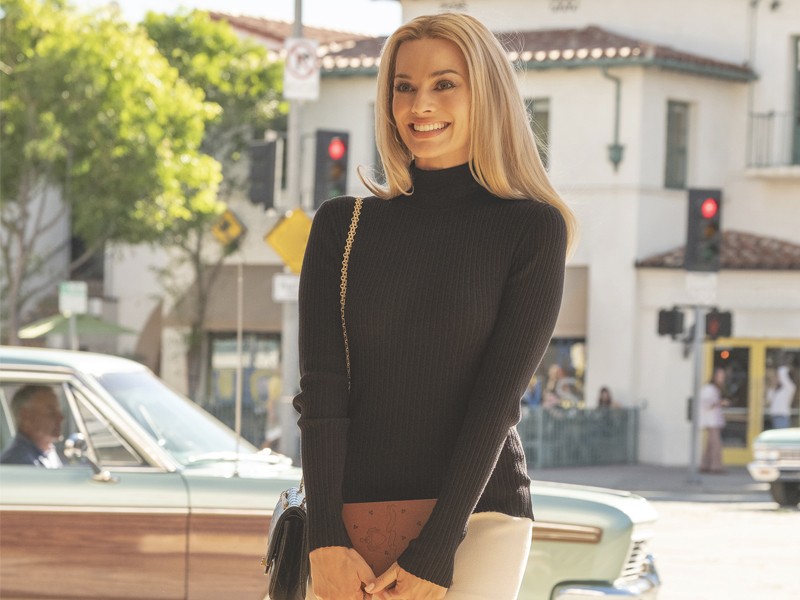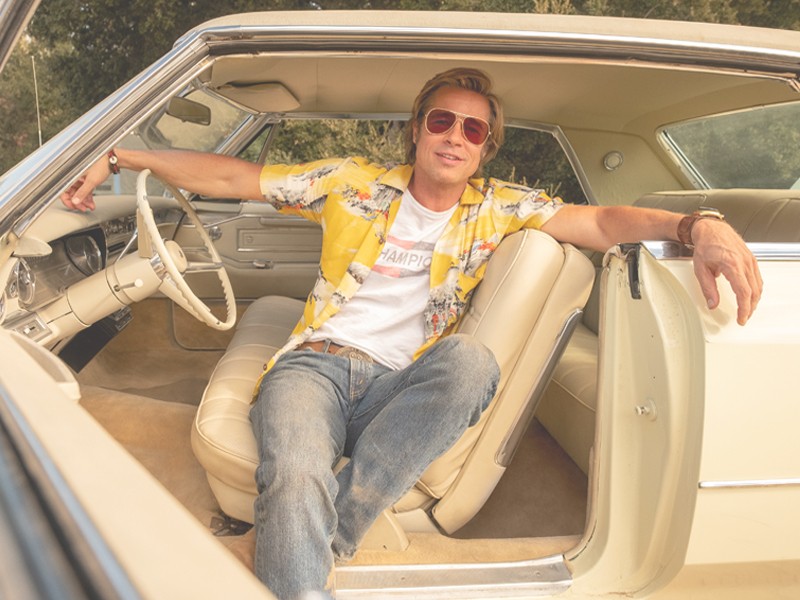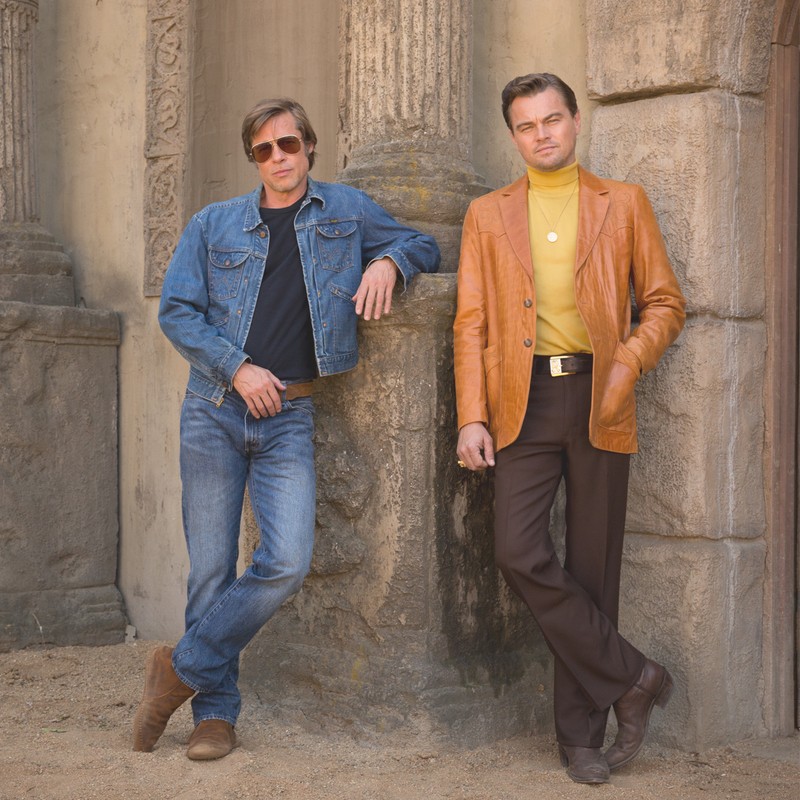Film Review: Once Upon A Time In Hollywood
Not only is the film an homage to the dying days of Hollywood’s golden era but a tribute to Sharon Tate, the 26-year-old rising star who, along with three of her friends, was murdered, just weeks before giving birth, by members of Charles Manson’s ‘Family’ in August 1969.
It’s the Los Angeles of that period we’re presented with in glorious detail when Once Upon A Time opens.
DiCaprio is fading TV star Rick Dalton, a household name thanks to the Western series Bounty Law, but as the decade draws to a close, he’s dogged by self-doubt and alcoholism and confides in long-time friend and stunt double Cliff Booth (Pitt) that the industry is changing at such a rate he risks being left behind. He’s given a lifeline when cast as the villain in TV show Lancer but to his horror, is asked to hide his face with a moustache and wear hippie-inspired outfits to reflect the changing times. On set, his hesitancy is at odds with the precociousness of an eight-year method actor (kudos to the young Julie Butters for outshining DiCaprio in their scenes), but after a faltering start, he finds his mojo, even if it’s not enough to ignite the movie career he hankers for.
While DiCaprio’s busy depicting the melancholic star, in another storyline, we follow Booth, the laidback war veteran who can throw a punch when he needs to. Unable to get work following a fight with a controversially cocky Bruce Lee (Mike Moh), and hounded by rumours he murdered his wife, Booth is relegated to driving Dalton around town.
We see Booth deposit Dalton back to his mansion, while he returns to his trailer and dispenses rancid dog food for his pit bull Brandy, who has a pivotal role later in the movie.
Booth also acts as his handyman, which goes some way to explain Pitt’s gratuitous shirtless scene as he works on Dalton’s roof. It might be 28 years since Thelma and Louise, but at 55, Pitt proves he’s still got it.
One afternoon, Booth picks up hippie hitchhiker Pussycat (Andie MacDowell’s daughter Margaret Qualley in a star-making performance) and drives her back to Spahn Ranch where he encounters other members of the Manson Family. Recognising it as the former set of Bounty Law, he sets about looking for the owner George Spahn (Bruce Dern), worried that he’s being taken advantage of. It’s one of the examples where Tarantino has fused fiction and real-life as Charles Manson and his followers did live on that ranch during this period.


It’s the same tact Tarantino uses for our introduction to Tate.
While Dalton and Booth are inspired by people, but ultimately figments of Tarantino’s imagination, Dalton’s new neighbours are director Roman Polanski (Rafal Zawierucha), fresh off the success of Rosemary’s Baby, and his new wife Sharon Tate (Robbie).
DiCaprio and Pitt are given huge amounts of screen time, which they clearly relish and no doubt will be rewarded come awards season, the same can’t be said of Robbie.
Bar a scene in which Tate delightedly watches a daytime screening of her latest film, she only appears in snippets whether in an open top car, partying at the Playboy Mansion, or dancing at home. It’s what led a female journalist at Cannes Film Festival to ask Tarantino why we don’t hear her speaking very much. Evidently seething, he curtly responded, ‘Well I just reject your hypotheses’ while the cast shifted awkwardly in their seats. It seems a fair observation though. Robbie is such a magnetic performer that you want to see more of her on screen, and to find out more about Tate too but instead we must make do with brief glimpses, including a contentious appearance just before the credits roll.
The final half hour has been widely discussed and dissected following the film’s release in America. No spoilers here but while four members of the Manson Family do turn up at Cielo Drive with the intention of committing murder, as they did on the evening of August 8, 1969, events don’t play out as history dictates. There is extreme violence, along with a dark comic note that runs through the closing scenes, which is ludicrous at points, and this will mark a love or hate moment. Indeed, there were whoops and cheers during the screening, but undoubtedly, just as it has in America, the ending will prove divisive for UK audiences.
As is Tarantino’s predilection, Once Upon A Time is long, at an indulgent two hours and forty minutes, but the calibre of the cast ensures the film doesn’t sag. The period detail is a joy to behold, and any film fan will savour the industry references and cameos peppered throughout, but the lack of time devoted to Tate and the troubling conclusion undermines what might have just been the perfect movie experience.
Once Upon A Time…In Hollywood is released on August 14
DISCLAIMER: We endeavour to always credit the correct original source of every image we use. If you think a credit may be incorrect, please contact us at info@sheerluxe.com.


